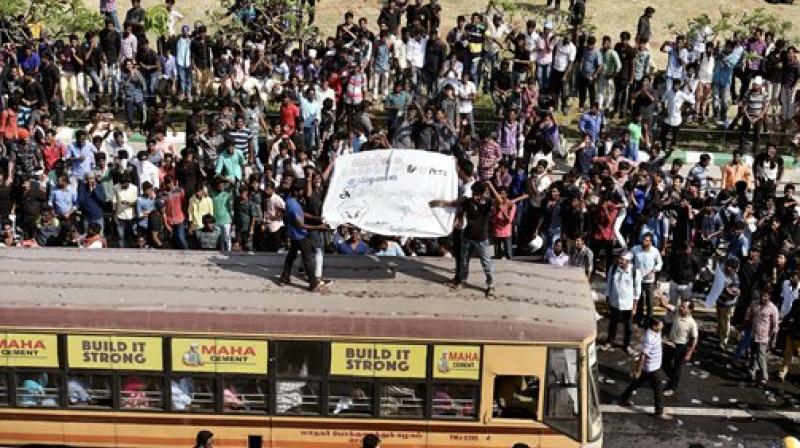Protests over Jallikattu have no base in ideology
The Jallikattu protest has taken a revolutionary mode due to media attention.

Trisha should be stripped naked and be chased on the road”. This is just another abuse faced by Kollywood actor Trisha Krishnan, who left the shooting venue after an angry mob of Jallikattu supporters protested against her for endorsing PETA, People for the Ethical Treatment of Animals. A complete list of all these expletives can be found on Facebook that has been used against the actor. What grave crime has Trisha committed to attract such an attack? Well… she just had a difference of opinion with regard to Jallikattu. For the record, Trisha has always projected herself as a serious animal rights activist, unlike her counterparts. Apart from this, a few shooting units of Trisha’s upcoming movies were also attacked by Jallikattu supporters. Following this the actor has retracted her earlier statements claiming to have not spoken anything against Jallikattu.
Following a ban on Jallikattu by the Supreme Court, there’s a phenomenal rise in support for the sport across Tamil Nadu irrespective of the fact that Jallikattu is being conducted in merely four districts of the state. Also, it has been considered the pride of a particular caste group. The non-inclusion of dalits has also been a matter of contention over the years. People who had no roots with Jallikattu have also joined the protest. A large number of students, with no political links, have been protesting. Around two lakh people have been protesting against the ban at Marina Beach. The media is unceasingly focusing on the protests and the film stars have also jumped in with their support to “save the pride of Tamils”. It would not be an exaggeration to say that Jallikattu protests are a massive people’s rebellion after the anti-Hindi protests of 1965 in Tamil Nadu. But there’s a vast difference between the two.
The anti-Hindi agitation of 1965 had an ideological base, unlike the Jallikattu protest. This is nothing but a result of shock and anger in losing their racial identity, which has been crowning them for the last 1,000 years and that too by North Indians. The Dravida Munnetra Kazhagam rose to power in Tamil Nadu simply by playing the Tamil identity card. After the early demise of C.N. Annadurai, the founder of DMK, his successor and five times chief minister M. Karunanidhi always pretended and ruled like a Chola king. The proof was the floral crown and the battle sword, which decorated him in all the meetings he was part of. After the rise of MGR, Mr Karunanidhi’s dream of reigning was temporarily shattered. J. Jayalalithaa went a step further by portraying herself as divine feminine form such as Mother Mary and Tamil goddess Mariyamma through thousands of cutouts.
In contemporary history, the LTTE’s Prabhakaran was the proud symbol of Tamil ethnic identity. Many Tamil film directors are still claiming Prabhakaran as their leader, and this is the critical background with which the Jallikattu protest has to be viewed. I have been approached by TV channels for interviews on Jallikattu and I am not for it. How can I? My home is just a few minutes away from Marina Beach where people are protesting. This protest has been glorified and hailed by the media for their tremendous show of solidarity without any political leadership. If mass unity is the matter of concern, I could cite the demolition of the Babri Masjid, which involved mass solidarity. The former’s mob fury was based on religious feelings; and Jallikattu protests and connected rage are based on racial feelings. Not a vast difference, I guess.
The Jallikattu protest has taken a revolutionary mode due to media attention. The nature of the movement has radically changed the anger in minds of people against the governments in the state and Centre. The protest against the Jallikattu ban is in no way connected to the earlier political protests ; those demonstrations usually led to violent riots. The scene at the Marina Beach was just like a “carnival”. The air is filled with beats of folk dance, music and street plays with strong messages to the Narendra Modi government. It was a blast! Jallikattu is just a symbol. This student uprising is against corruption, power. And, lastly, though the struggle is pointed towards Tamil identity, a major part of the youths cannot write in Tamil. Tamil is just a spoken language here, and that is an irony.
